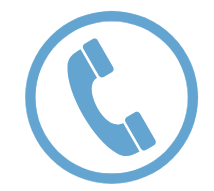Suicide & Self-Harm
Overview
![]()
Suicide or self-harm is the intentional act of injuring oneself or causing intentional death to oneself. Suicide is very complex, with multiple individual, environmental, and societal factors impacting one's risk. 
If you or a loved one is having suicidal thoughts or thoughts of harming oneself, please speak to a trusted family member or friend, or seek professional help from the resources below:
Nova Scotia Provincial Mental Health and Addictions Crisis Line
Newfoundland and Labrador Mental Health Crisis Line
Government of New Brunswick Suicide Prevention and Support
Prince Edward Island Mental Health Support and Services
Statistics
- Falls were leading cost of unintentional injury in Atlantic provinces ($760 million, 43% of total cost of injury primarily due to hospitalization rates), Followed by transport incidents ($256 million) and inflicted injury, suicide / self-harm ($201 million).
- Suicide / self-harm is the second leading cause of injury for youth aged 15-24 years old, and the third leading cause of injury for children aged 0-14 and adults who are 25-64 years old.
- For youth aged 15-24 years old, suicide / self-harm is the leading cause of hospitalization due to injury in Atlantic Canada.
- Compared to the other Atlantic Provinces, New Brunswick had the highest cost per capita due to suicide/self-harm ($409.54) for youth aged 15-24 years old.
- Compared to the other Atlantic Provinces, Nova Scotia had the highest cost per capita due to suicide/self-harm for adults aged 65 years and over.
- New Brunswick had the highest cost per capita due to suicide/self-harm compared to other Atlantic provinces for children aged 0-14 years old ($25.39).
- Compared to the other Atlantic Provinces, Nova Scotia had the highest cost per capita due to suicide/self-harm for adults aged 25-64 years old ($100.09).
The following Statistics are from the Total Cost of Injury Report from Atlantic Canada in 2018.
*Cost per capita is the cost per person in the province.*
| Suicide and self-harm rates among Indigenous populations of Canada, and trans or non-binary individuals are higher than non-Indigenous Canadians and Canadians who do not identify as trans or non-binary. See Indigenous Health Tab and 2SLGBTQIA+ Tab for more information. However, there is a lack of data and research specific to suicide rates among Indigenous, 2SLGBTQIA+ and other minority populations within the four Atlantic provinces. This research should be prioritized and advocated for to increase awareness of suicide rates among marginalized populations of Atlantic Canada and work to address risk factors contributing to higher suicide rates. |
 Please click these hyperlinks for more information on trans and non-binary mental health, and Indigenous mental health. Please click these hyperlinks for more information on trans and non-binary mental health, and Indigenous mental health.  |
Links to Other Resources:
| Children’s Safety Network (violence prevention, fire-arm safety) |
|
| BC Injury Research and Prevention Unit (violence prevention) |
|
Nova Scotia Domestic Violence Resource Centre (staying safe, helping others, emergency contacts) |
|
Violence Prevention and Community Partnerships (support services for victims of abuse, emergency contacts) |
|
PEI Family Violence Prevention (support during COVID-19, emergency and community contacts) |
|
Royal Newfoundland Constabulary (intimate partner violence, resources, and emergency contacts) |
|
 |
Government of Newfoundland and Labrador (violence prevention initiative) |
Document Library




